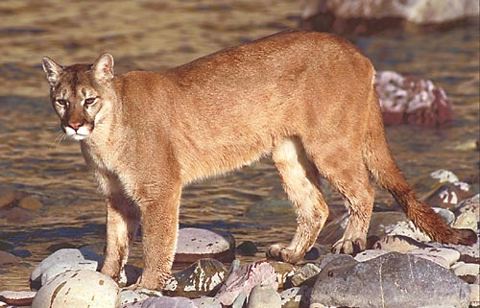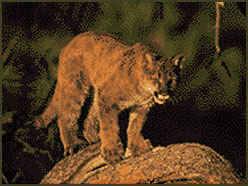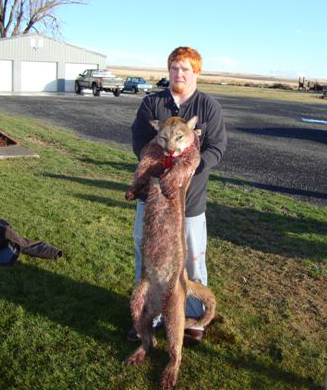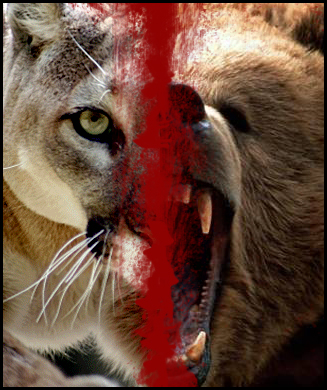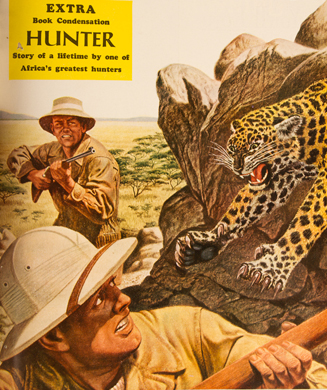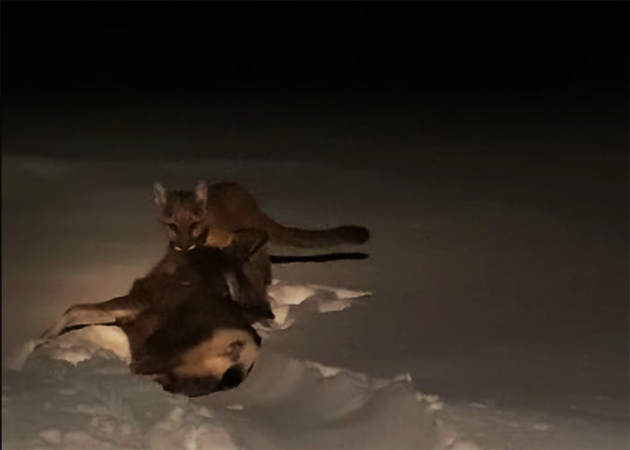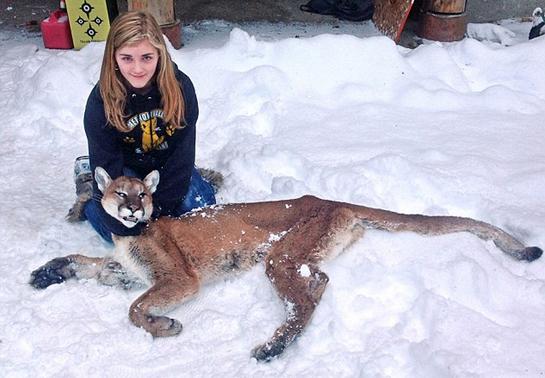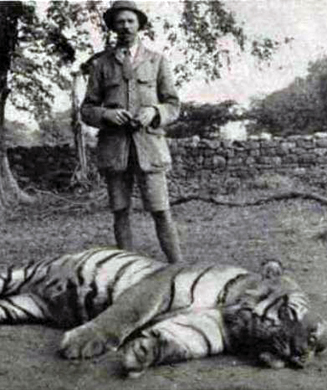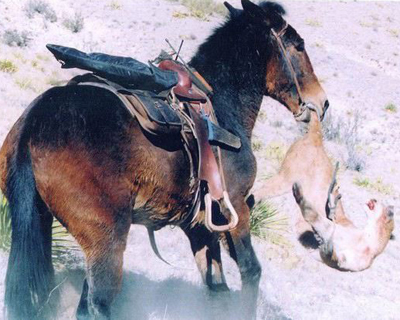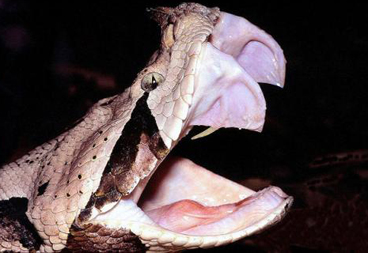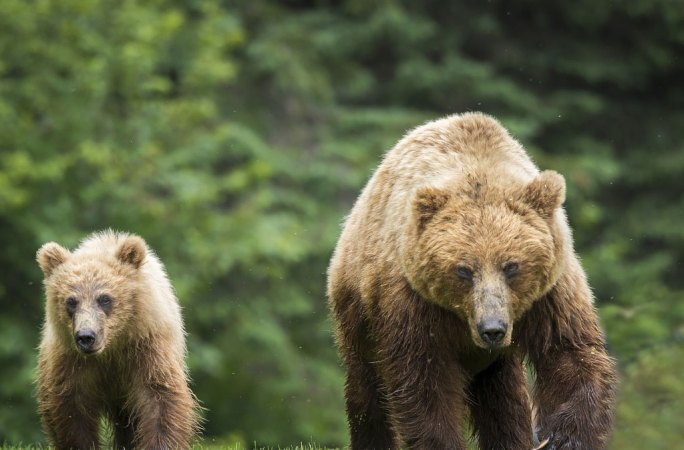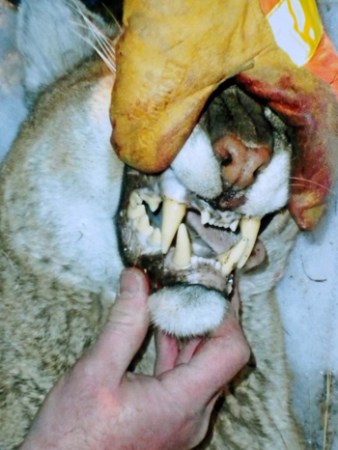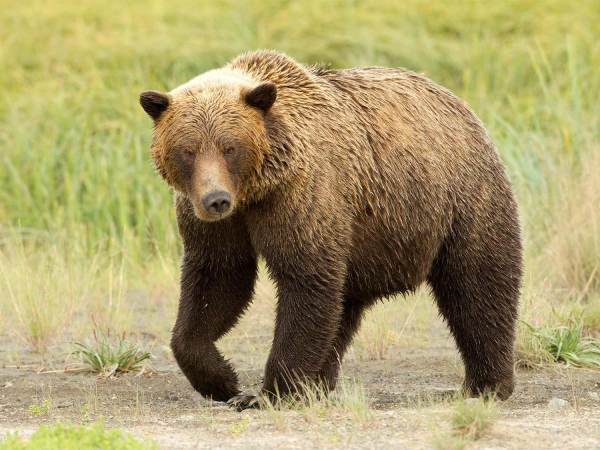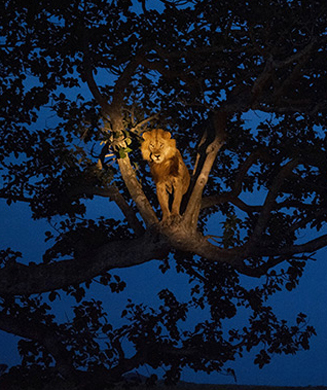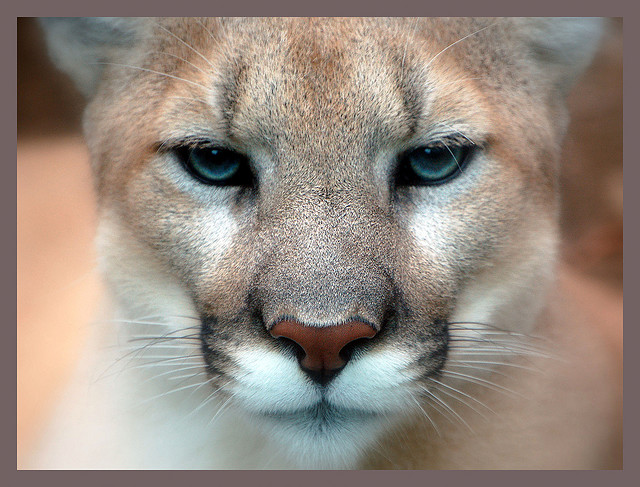
The short answer: There are more lions. There are more humans in the woods with the lions. The lions do not fear the people, but view them as another source of food. The lions try to kill and eat the people‚ and sometimes they succeed.
The long answer takes a bit more explaining. All states in the cougar’s traditional Western ranges report sharp increases in mountain lion numbers. The rise is largely attributable to the combination of “Disneyesque” anthropomorphic depictions of animals in the entertainment media (e.g., The Lion King) and a modern pseudoscience masquerading as biology that preaches a live-and-let-live philosophy where the big predators are concerned. The general result has been the development of protectionist attitudes in the minds of most Americans‚especially those in urban areas.
Mountain lions, wolves and bears have become the poster children of animal sentimentalists. The ballot box regulates predator management these days. Voter initiatives to curtail or ban lion hunting have succeeded in three Western states with large lion populations: California, Oregon and Washington. All others, except Texas, have limited protection in the form of closed hunting seasons and special permits.
Mountain lions are territorial animals. Individual territory size ranges widely depending in large part on prey species density, but 100 square miles is about average. Young lions must find turf not claimed already by a mature male. Mature lions often expand their ranges in response to decreased prey density. It follows that an expanding cougar population will inevitably spread into areas of dense human occupancy, increasing the likelihood of unsociable human/lion encounters.
“It starts with dogs and cats going missing,” says Dan Lay, a retired wildlife control officer for the British Columbia Ministry of Environment who has developed cougar-management programs across North America. “Then people lock up their pets.
Unfortunately, cougars that have been feeding on the pets also have watched children play with them. So the children become the new favored target.”

Breaking Lion Myths
Lay abhors the mass media’s propensity to blame lion attacks on “human encroachment.” Habitat loss is a deplorable problem that needs addressing, but it is not the cause of attacks, says Lay. Rather, he believes such encounters are evidence of a growing lion population that is taking up residence in suburban and even urban areas.
A mountain lion prowling a shopping mall parking lot is almost cliche these days. In Placerville, Calif., a cougar activated the automatic doors at the emergency entrance of a downtown hospital. Pets disappearing from suburban yards are commonplace, and there are cases of cougars literally taking dogs right off their leashes.
Contrary to frequent reports, animals have no “instinctive” or “natural” fear of humans just because they are human. Among predators, hazard avoidance and prey recognition are learned behaviors. Through repeated nonthreatening exposure to humans, a lion learns that some of the prey in its new territory is bipedal.
Because children and adults of small stature more closely approximate the size of other prey species, they are by far the most common targets for lions. Hairy-chested types enjoy marginal immunity due to the intimidation factor their sheer size presents; for instance, a cougar may pass over a bull elk in favor of a whitetail deer fawn. However, if deer are in short supply and an elk presents itself….
The belief that animals prey on humans only in desperation due to age or starvation is a myth. Young, healthy animals account for the vast majority of lions involved in human attacks.
“I investigated the death of an eight-year-old girl back in 1979,”Dan Lay told me. “The cougar still had fresh remains from a deer kill in its stomach. It just licked up the girl’s blood, left her lying in the ditch where it had dragged her and then moved on.”
A common preservationist argument is that you are 43 times more likely to be struck by lightning than attacked by a cougar. An observation by one expert paints the picture a bit differently.
Dave Fjelline is a professional lion hunter for the State of California, the same man who tracked down and killed the cougar that killed and partially ate Barbara Schoener on April 24, 1994, about 45 miles northeast of Sacramento. His take on the lightning-vs.-lion equation: It is an absurd comparison. People do not go out and stand under tall trees during a thunderstorm, but they do go out into cougar country without a second thought. In addition, the at-risk group is much smaller, and the risk more concentrated. It is sort of like comparing the chances of a CPA and an NFL quarterback getting their necks broken on Super Bowl Sunday.
“When you add in the fact that the lions are always there, and lightning comes and goes with the caprice of the weather, and that lightning does not come looking for you but cougars do, the odds tip most uncomfortably,” concludes Fjelline.
The State of California considers the risk very real, especially where children are involved. Some state parks are marked with signs warning, “Mountain Lion Country…No Minors Allowed.”
Photo: digitalART2
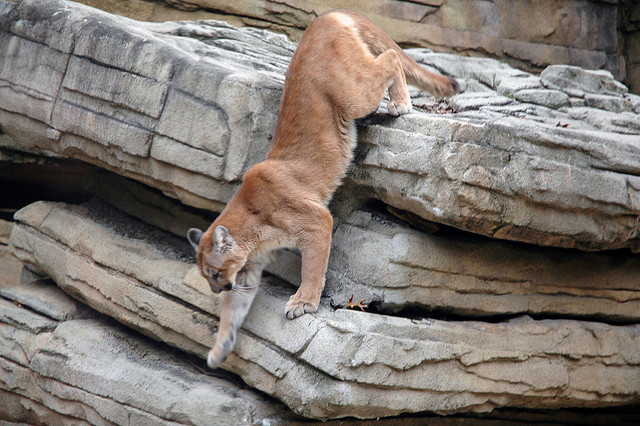
Avoiding An Encounter
Millions of people live and recreate in cougar country every year, and many of them do so within eyesight of cougars. Hunters are in a special group: Their choice of recreation places them in the same habitat and pursuing the same species as cougars.
What can you do to minimize the chances of an unpleasant or dangerous encounter?
Like any predator, cougars target the seemingly easy mark, the unwary and the defenseless. The most important thing you can do is to stay alert and be aware of what is going on around you.
Here are other ways to decrease the possibilities of a cougar attack:
- Keep a clean camp, much like you already do to avoid conflicts with bears. Cougars are extremely curious and quickly can become acclimatized to humans. Cougars routinely prowl camps in many areas and they may be more attracted to camps with a lot of food and cooking odors present.
- Leave your pet at home or keep it under close control. A dog fleeing from a cougar can lead the mountain lion straight back to you.
- Be especially alert when you are cleaning downed game animals and keep your firearm close at hand.
- If the worst happens and you find yourself in a confrontation with a mountain lion, what you do next can make the difference between a story you tell your friends and one they tell about you. Convincing a cougar that you are more than it wants to tangle with takes some courage on your part.
- Make yourself look as big as possible; stand tall. Spread your arms and open your coat.
- Maintain eye contact, speak loudly and firmly and bare your teeth.
- Do not turn your back on the cat, even to get uphill. If you decide to back up, be sure of your footing. Slipping while climbing could trigger an attack, and poor footing leaves you less able to fight if an attack occurs.
- Do not stoop, squat or bend.
- Don’t make quick movements or sudden noises that may trigger an attack.
- Do not run. Cougars chase down deer for a living!
If attacked, your option is simple: fight back with everything you have. Although cougars will defend a kill, their young or possibly even a den site, their most likely motivation for an attack is predation‚Äithey intend to eat you! Playing dead is not going to work. Plenty of people, even children, have fought off cougar attacks successfully, but feigning death just doesn’t work.
Use a stick, a club, your hands, a fishing pole, a camera‚ whatever. If you have to, shoot the animal. At close range, your rifle may be more useful as a club. If you kill the cougar, keep in mind that wildlife agents are going to have to be convinced that your life was in danger if you are going to avoid a citation. Leave the scene intact and contact wildlife authorities immediately. Better yet, stay put and have a friend contact the fish and game department. Get the names and telephone numbers of any witnesses.
If you see other hunters, ask them if they have had any cougar contact in the area that might corroborate your experience. Carefully note where you were standing when the attack occurred, where the cat was and other relevant locations. Mark these spots in some way that will not be erased by bad weather‚hunting season is a busy time for wildlife agents and it might take a while for one to reach you.
If you or a friend is injured, get treatment for shock, bleeding and sepsis. Tetanus is always a possibility, so keep your shots up to date. Rabies is another possibility and your margin of safety increases if you are treated within 72 hours of exposure.
Although rabies treatment has improved in the last few years, it is still very expensive, but a cheap remedy considering the alternative. Get professional medical help as soon as possible. Cougars kill by biting, and puncture wounds often cause internal bleeding and other injuries that may go undetected by nonprofessionals.
The chances that you will be confronted by a cougar are remote. However, should an encounter occur, the chances that you will survive intact are much greater if you have thought things out beforehand and are prepared to react accordingly._
Photo: sibretigre2
Myths and Facts
Contrary to popular belief, a cougar doesn’t usually leap on its prey from an overhanging branch or ledge.
Instead, it creeps up on its quarry, using cover and the wind to its advantage. When it has stalked to within a few yards, the cat springs forward and catches its meal in three or four ground-covering bounds. Unlike wolves or coyotes, which maim their prey, cougars kill quickly by breaking their victim’s necks.
Cougar Attack Timeline
Here are just a few of the more spectacular cases of cougar attacks in recent years:
- July 1996: On the same day, but in different places, 8-year-old Lance Beingessner and 5-year-old Christine Frank were hospitalized in the wake of separate attacks in British Columbia. Beingessner was dragged off a trail near Upper Arrow Lake, Frank from a front-yard swing.
- July 1997: Four-year-old Rafael DeGrave suffered head injuries when a cougar ambushed him and dragged him into brush alongside a hiking trail in Mesa Verde National Park, Colo. Within a week, a cougar killed 10-year-old Mark Miedema in Colorado’s Rocky Mountain National Park.
- August 1998: Five-year-old Carmen Schrock received extensive head injuries when attacked by a mountain lion at a campground near Metaline Falls, Wash.
- August 1998: Six-year-old Joey Wing needed 200 stitches to close wounds sustained in an attack near Swift Dam Campground west of Depuyer, Mont. That same week, 6-year-old Dante Swallow was mauled outside Missoula. Within two weeks, two more encounters occurred in the area.
- August 1999: Four-year-old Jacob Walsh was hospitalized with injuries requiring more than 200 stitches after a cougar grabbed him by the head as he played in his grandparents’backyard in Barstow, Wash.
- January 2000: Clarence Hall, an animal-control hunter for the Canadian government, was mauled by a cougar he’d been ordered to dispatch in the backyard of a home on the Nuxalk Indian Reserve in British Columbia.
- April 2000: Four-year-old Victoria Martinez was seriously injured in a nighttime attack during a campout at Bartlett Lake, Ariz. She survived a partially crushed skull and a nicked artery in her neck.
